Is the UK on Course to Switch to Renewables by 2050?
The UK has committed to reach net-zero carbon emissions by 2050. A handful of countries can meet their electricity demands using unusual renewables: geothermal (Iceland) or hydroelectric (Norway) generation; but this is only really possible due to the specific geography and low populations of those countries. When it comes to zero-carbon electricity generation, for much of the planet there are only really three games in town: solar, wind, and nuclear. Importantly, among these three, wind and solar energy production are growing polynomially while nuclear energy production has been stagnant or falling since around 1990.
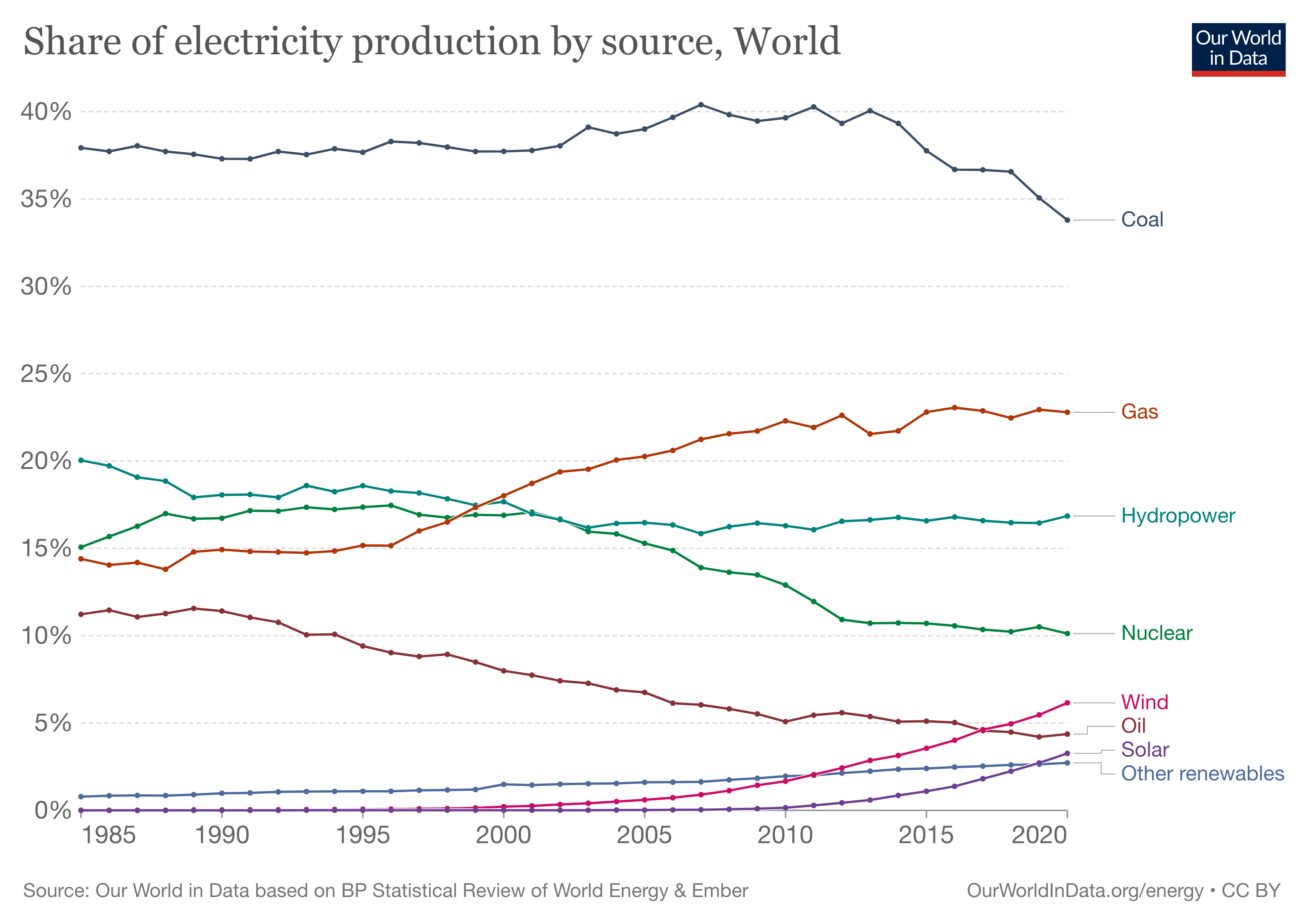
In 2020 the UK got 24% of its electricity from wind (having overtaken nuclear for the first time in 2019 and coal for the first time in 2016!) and only around 4% from solar.
What happens when we investigate this trend in the limit, assuming that the UK gets rid of fossil fuels by 2050, shuts down its nuclear plants without opening new ones (as looks somewhat plausible), and gives up on solar (which looks far less plausible). Is wind alone enough for the UK to reach net-zero by 2050?
How much energy will the UK need in 2050?
In 2019 the UK consumed about 2,178 TWh of energy. This figure has been on a pretty steady downward trend from its 2005 peak of 2,709TWh.
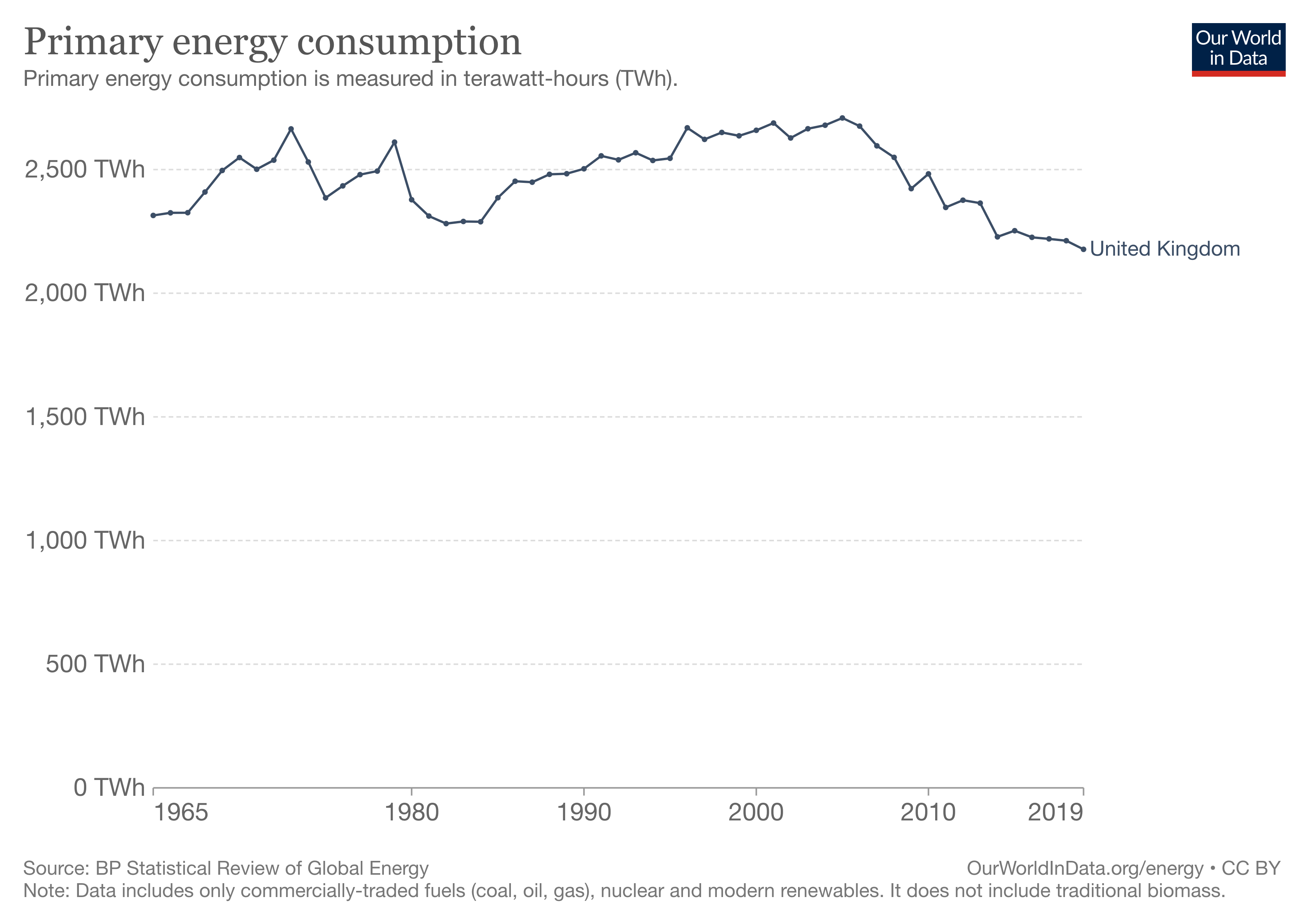
Strangely, Our World in Data only seems to provide electricity consumption data on a per-capita basis. In 2019 the UK consumed 4,731 KWh of electricity per person, which works out to be about (66.84m * 4,731KWh) 316 TWh in total. This too has been on a downward trend, since a 2003 peak of 6,640KWh per person.
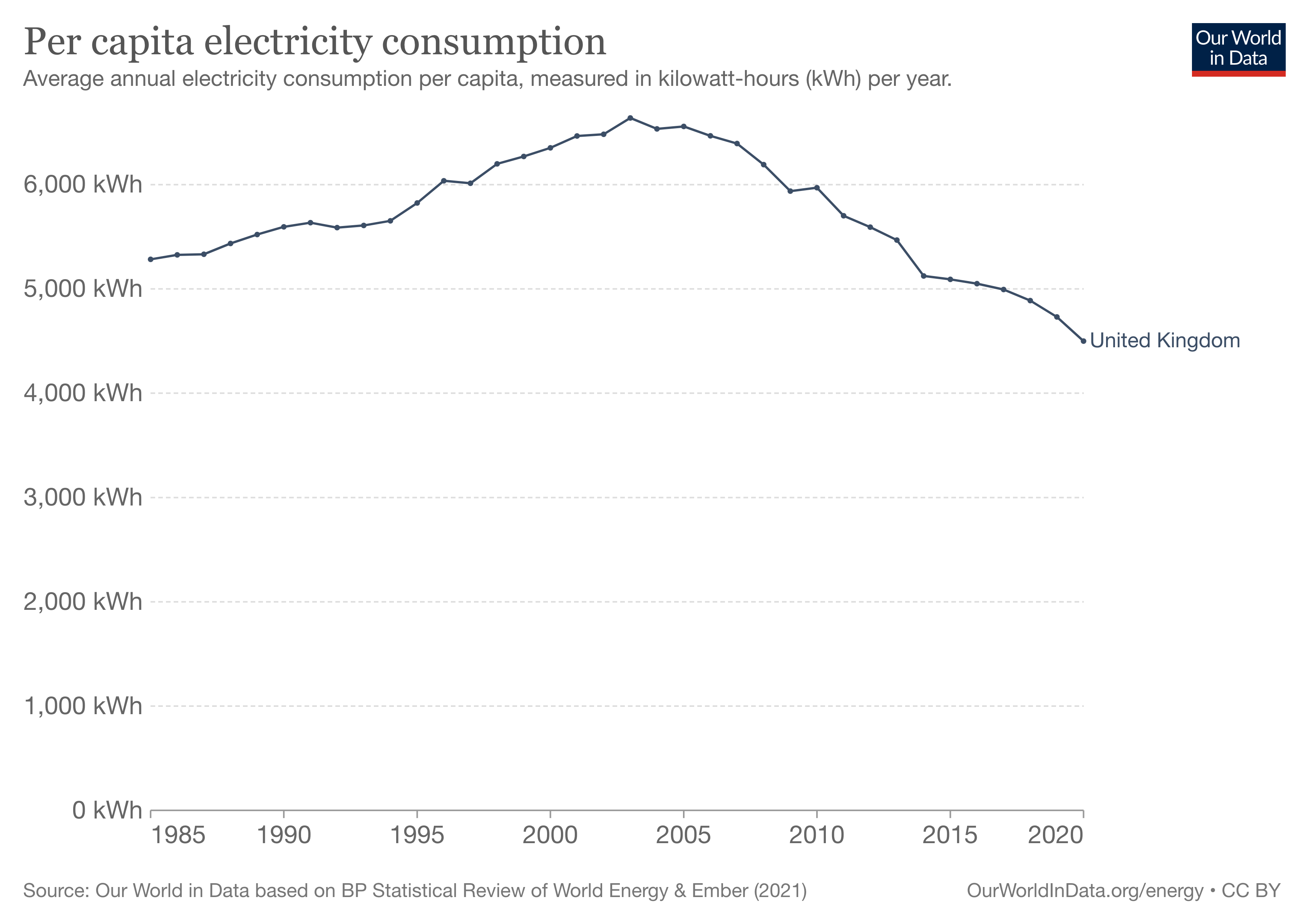
So can we assume that these downwards trends will continue? In the case of total energy: maybe, in the case of electricity: almost certainly not. There are some ways of harnessing renewable energy without generating electricity: burning biomass, solar water heating, solar furnaces, biofuels etc. but it’s unlikely they will end up accounting for a large fraction of the UK’s energy mix.
Because we’re working on quite a crude model it’s probably fine to just assume that we need all energy to come from renewable electricity. Even if it then gets turned into hydrogen or electrofuels for certain applications. Depressingly, this still doesn’t get the country to net-zero as the chemical reactions in industrial processes like cement and steel production release greenhouse gasses even if they’re heated entirely renewably. A solution to that problem needs to be found regardless of how well the renewable rollout goes though, so we can just cross our fingers and ignore that one.
As for total energy consumption this is probably one of the biggest sources of uncertainty in this analysis. The country’s population is growing, but not quickly. Switching to electric cars, (universally) electric rail, and active transport are more efficient. But using renewable energy to produce, liquify and transport green hydrogen is likely to require a lot more energy than digging up, transporting and refining crude oil. Insulating homes and heating them with heat pumps saves a huge amount of energy relative to heating leaky homes with gas. Storing energy to even out the intermittence of renewables entails efficiency losses. Ultimately for the sake of laziness I’m willing to take the 2019 number. So 2,178 TWh of energy per year, or an average power of 248.6GW, is our goal!
Why not solar?
In the blog (post) that inspired this post Casey Handmer gives a convincing rundown of why he thinks the combination of solar power and lithium ion batteries will out-compete nuclear power into irrelevance. Certainly, for much of the world, solar is probably the answer to net-zero. But the more northerly parts of Europe are among the few places in the world that have both a large number of people and truly pitiful insolation.
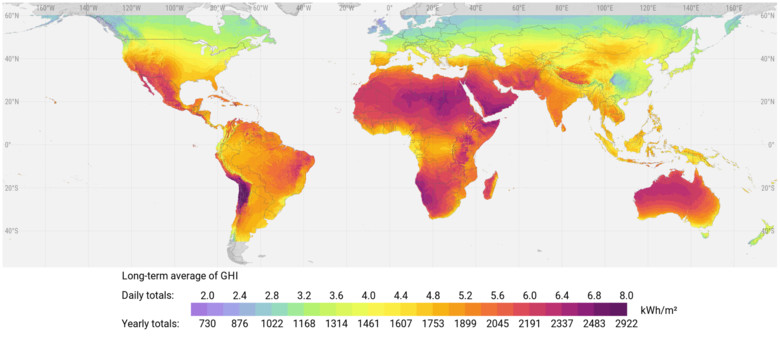
So it will come as no surprise to anyone who has visited the UK that solar is out. What about wind?
Is there enough wind?
The wind equivalent of the above insolation map paints a far rosier picture for the UK:
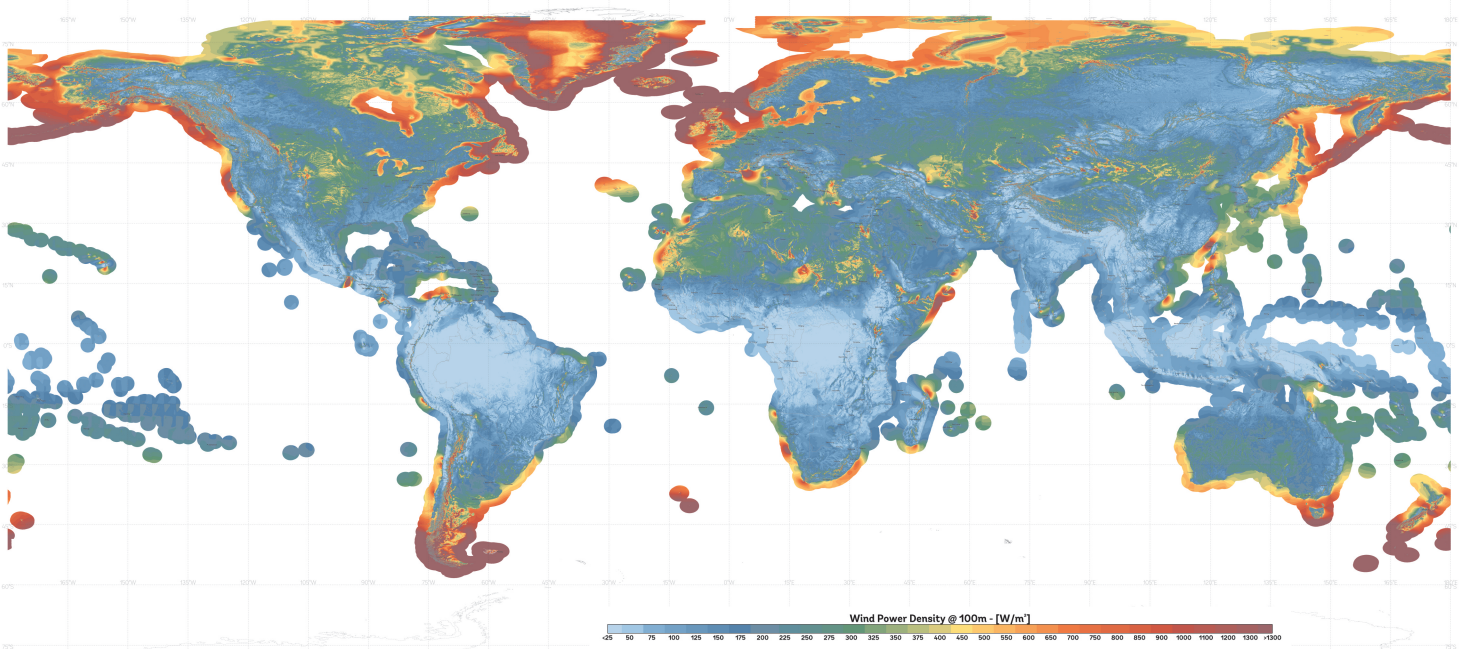
I haven’t been able to find a good source for the UK’s total onshore wind potential, but The World Bank has put together some excellent analysis and maps of offshore wind potential for a number of countries. This is what the UK’s looks like, and it’s just about as good as it gets:
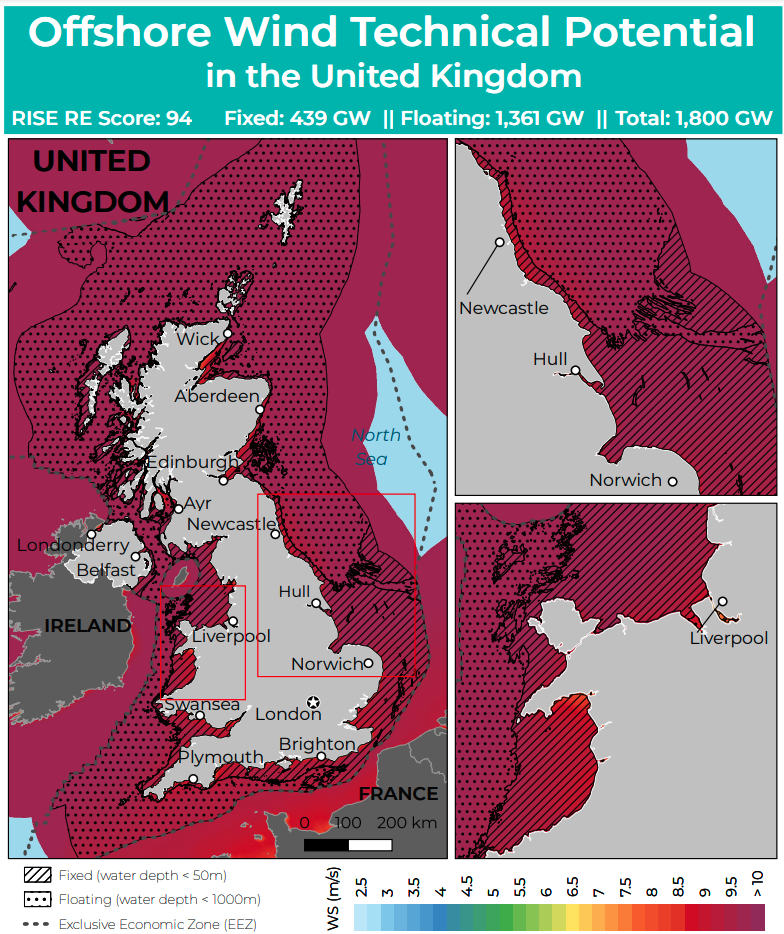
The headline numbers here don’t take into account capacity factor (average output divided by peak output), which for UK offshore wind is about 46% (though this may be a little on the optimistic side if the best sites have been developed first). If we multiply by this the headline figures become:
- 202GW of fixed offshore wind potential
- 626GW of floating offshore wind potential
- 828GW of total offshore wind potential
So we probably can’t achieve the 250GW of power we’re aiming for with fixed offshore wind alone, but there is more than enough total offshore potential to meet this number. Remember we’re not talking about meeting the UK’s current electricity needs here, that would need a comparatively trivial 36GW of production, we’re talking about replacing all of the country’s petrol, diesel, coal and gas too. So the fact this is even theoretically achievable with offshore wind alone, without taking into account other zero-carbon sources of power like hydroelectric, nuclear power, solar, and even onshore wind(!) is very encouraging.
Is this viable?
We can get a ballpark idea of how viable it is to install this much wind by 2050 by plotting recent trends on a log-scale plot and extrapolating out an exponential line of best fit:
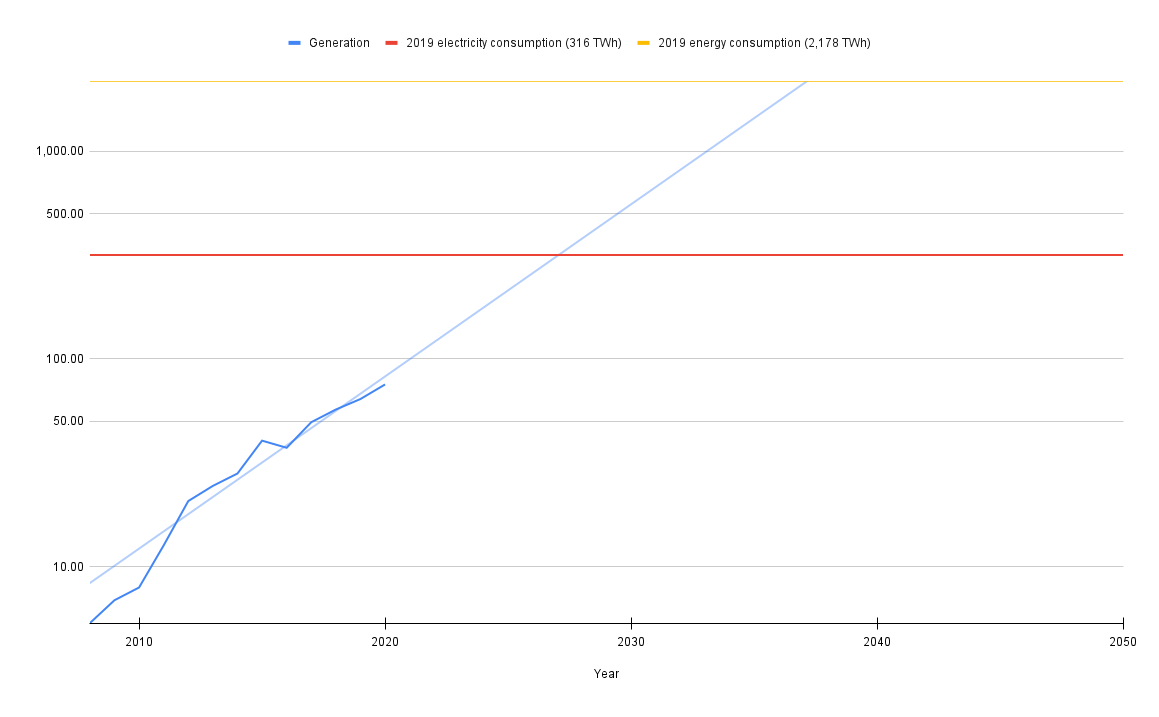
Which implies that we’re currently on course to generate all the electricity currently consumed by the mid-late 2020s, and all of the energy currently consumed by the mid-late 2030s. The equation that Google Sheets generated for the line of best fit assumes a 19% growth rate, which feels to me like it could plausibly be sustained over the next 15 years.
There’s enough leeway in this projection that even if the assumption that energy consumption doesn’t increase over the next few decades doesn’t hold and we end up needing, say, 50% more it doesn’t really matter. The only thing that really matters is that the growth projection is reasonable and stays on course. To emphasise that point, here’s what happens if we replace our exponential fit with a (closer-fitting, but possibly over-fitted) polynomial one:
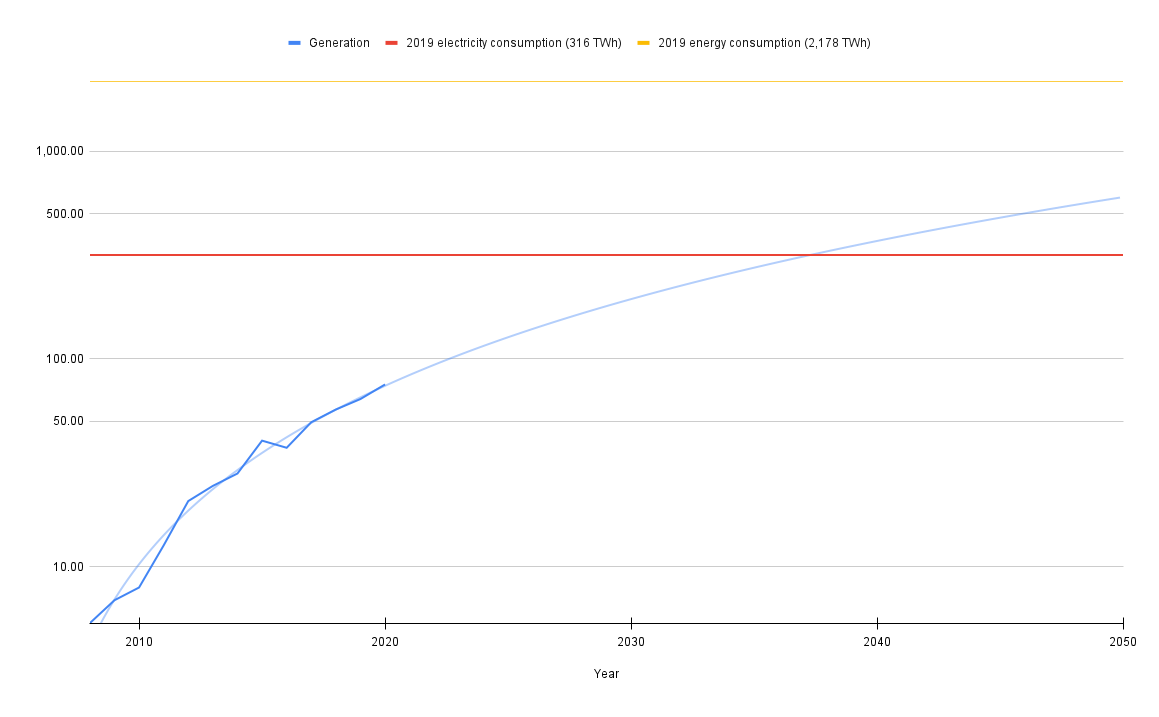
Under this scenario the UK could probably only meet its net-zero target by some combination of building a lot of nuclear power (starting very soon!) and importing a lot of energy from its neighbours.
What about storage?
Smoothing out intermitent power generation with energy storage is probably the most likely thing to derail wind’s growth. Perhaps the biggest unsung good news story in the UK is that since a peak in 2012 coal has been almost entirely phased out of the UK’s energy mix. This is largely due to the rise of wind power and the ability of gas peaker plants to pick up the slack when the wind isn’t blowing. Now lithium ion battery storage needs to do to gas what gas did to coal. Again, Casey Handmer has written effusively about the ability of lithium ion batteries and Tesla’s Autobidder to near-instantly flood the market with cheap electricity and prevent peaker plants from ever spinning up, and turn a profit while doing so.
The UK had 1.3 GW of grid battery storage in 2021, it should have 4.5 GW of grid battery capacity by the end of 2022 and has 20 GW of “pipeline” projects planned. That’s a pretty healthy rate of growth but I can’t find enough data to understand exactly how much energy storage and power capacity is needed, nor to project how grid storage capacity is going to increase in the future.
Furthermore lithium ion won’t be the full picture for grid storage, as this excellent paper outlines lithium ion will likely swallow a large amount of the grid storage industry, but longer term storage will likely be provided by pumped hydrogen, hydroelectric, and a tiny bit of compressed air storage.
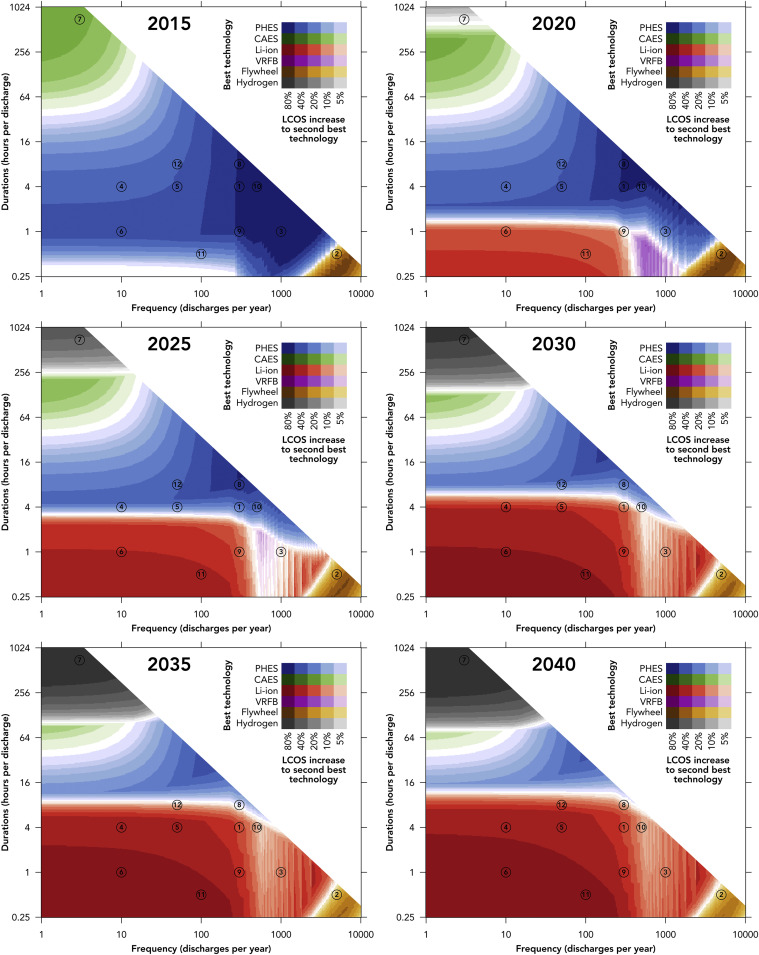
Relative to the renewables themselves grid storage is the pivotal factor in whether the UK can decarbonise its energy in the next 30 years. This won’t come as a surprise to anyone who is familiar with renewable energy. I think it’s clear that the world is starting to face up to this problem, but whether it can be solved in time unfortunately still looks like an open question.